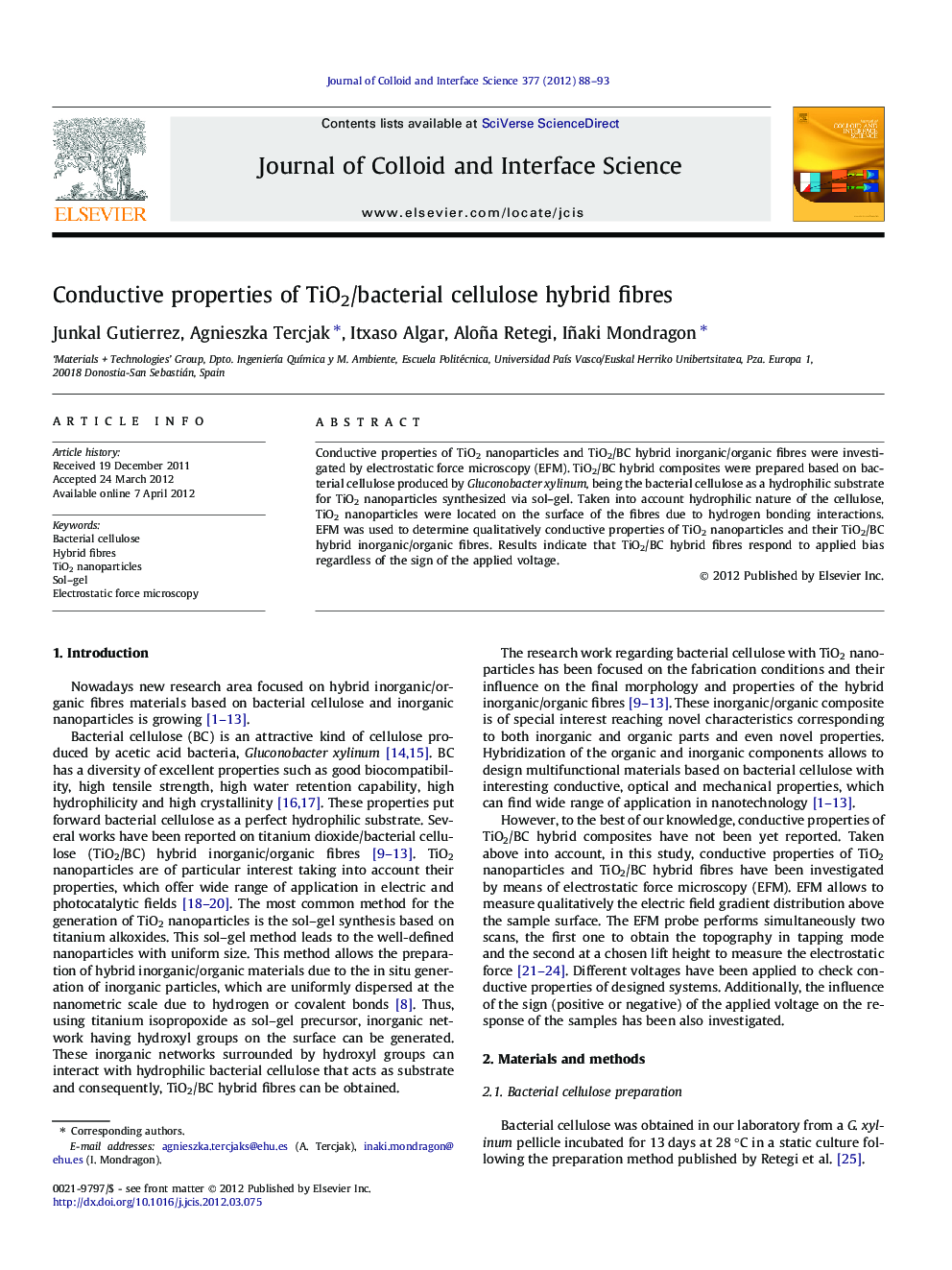| Article ID | Journal | Published Year | Pages | File Type |
|---|---|---|---|---|
| 608278 | Journal of Colloid and Interface Science | 2012 | 6 Pages |
Conductive properties of TiO2 nanoparticles and TiO2/BC hybrid inorganic/organic fibres were investigated by electrostatic force microscopy (EFM). TiO2/BC hybrid composites were prepared based on bacterial cellulose produced by Gluconobacterxylinum, being the bacterial cellulose as a hydrophilic substrate for TiO2 nanoparticles synthesized via sol–gel. Taken into account hydrophilic nature of the cellulose, TiO2 nanoparticles were located on the surface of the fibres due to hydrogen bonding interactions. EFM was used to determine qualitatively conductive properties of TiO2 nanoparticles and their TiO2/BC hybrid inorganic/organic fibres. Results indicate that TiO2/BC hybrid fibres respond to applied bias regardless of the sign of the applied voltage.
Graphical abstractFigure optionsDownload full-size imageDownload high-quality image (74 K)Download as PowerPoint slideHighlights► Hybrid TiO2/bacterial cellulose fibres were fabricated based on sol–gel synthesis. ► Bacterial cellulose acts as a template for TiO2 nanoparticles generation. ► Nanoparticles are located on the fibres surface via H-bonding interactions. ► Generated TiO2 nanoparticles maintain conductive properties in designed hybrid fibres. ► Qualitative conductive properties were measured by EFM technique.
